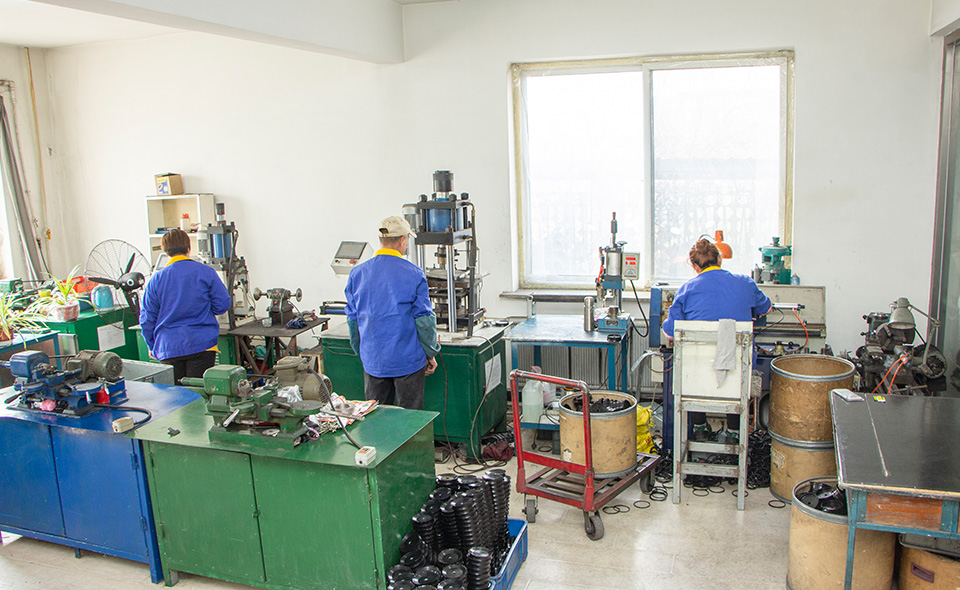Pneumatic rubber pistons represent a cornerstone in engineering marvels, blending the resilience of rubber with the force of pneumatic systems to create efficient and versatile mechanisms. These ingenious components harness the power of compressed air or gas to drive motion, performing a multitude of functions across various industries with remarkable precision and reliability.
At the heart of pneumatic rubber pistons lies their ingenious design, a fusion of flexible rubber and pneumatic force. Crafted from high-quality elastomers, these pistons exhibit exceptional elasticity and durability, allowing them to expand and contract seamlessly within pneumatic cylinders. This unique construction enables them to convert the energy stored in compressed air or gas into mechanical motion.
The application spectrum for pneumatic rubber pistons spans across industries, playing vital roles in automation, manufacturing, transportation, and more. In automated systems, these pistons act as powerhouses, executing tasks such as pushing, pulling, lifting, and pressing with exceptional accuracy and efficiency. Their ability to generate substantial force while maintaining a compact size makes them indispensable in machinery where space is at a premium.
Manufacturing processes heavily rely on pneumatic rubber pistons for tasks requiring controlled and repetitive motion. They power assembly lines, operate robotic arms, and drive various industrial processes with precision, contributing to increased productivity and cost-effectiveness. Their consistent performance and adaptability to different operating conditions make them an integral part of modern manufacturing setups.
The transportation sector also benefits significantly from the application of pneumatic rubber pistons. In vehicles, these pistons power braking systems, enabling smooth and responsive deceleration by converting air pressure into braking force. Their reliability and quick response time play a crucial role in ensuring vehicle safety on roads and highways.
Furthermore, pneumatic rubber pistons find their place in heavy machinery and construction equipment, where their robustness and reliability are essential. From excavators to cranes, these pistons contribute to the smooth operation of hydraulic systems, controlling movements and facilitating heavy lifting with precision and power.
A remarkable aspect of pneumatic rubber pistons is their adaptability to diverse environmental conditions. They exhibit resistance to temperature variations, corrosion, and wear, ensuring longevity and consistent performance even in challenging settings. This durability translates into cost savings and reduced downtime for industries relying on these pistons for their operations.
The design and engineering behind pneumatic rubber pistons continually evolve, leveraging advancements in materials and manufacturing techniques. Innovations in elastomer compounds and precision molding technologies enhance their efficiency, enabling them to handle higher pressures, extend service life, and operate more quietly and smoothly.
Moreover, the integration of smart technologies into pneumatic systems has opened new avenues for enhancing the performance of rubber pistons. Sensors and monitoring devices enable real-time data collection on pressure, temperature, and piston wear, allowing for predictive maintenance and optimized operational parameters.
The future of pneumatic rubber pistons holds exciting possibilities, driven by ongoing research and development. Engineers and scientists are exploring nanomaterials, advanced polymers, and innovative designs to further improve their functionality, efficiency, and environmental sustainability. These efforts aim to create pistons that are not only more durable and efficient but also eco-friendly, aligning with the global shift towards greener technologies.
Pneumatic rubber pistons stand as indispensable components at the core of numerous industrial and technological applications. Their ability to convert pneumatic energy into mechanical motion with precision, reliability, and adaptability makes them invaluable across a wide spectrum of industries. As they continue to evolve and innovate, these pistons remain key drivers of progress, efficiency, and innovation in the ever-evolving landscape of modern engineering.








